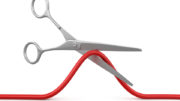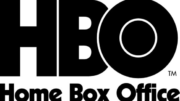Another term you hear when you are around enough satellite geeks is “spot beam.” It’s an important idea for making sure that satellites operate properly and that the thousands of channels of programming in a satellite fleet don’t interfere with each other.
I talked a little about spot beams in the article, “What is a transponder?” but it can still be confusing. That is because actually, all “beams,” all transmissions from a satellite, are actually spot beams of one sort or another.
The term “spot beam” refers to the idea that the transmissions from the satellite are focused as if they were coming from a spotlight. Unlike a regular light bulb which spills light in all directions, a spotlight focuses that light in only one direction. The effect is that more light goes where you want it and less where you don’t. This is also true with satellite transmissions. Every transmission is focused so it doesn’t go too far outside the borders of the home country. In this way, each country is free to do whatever broadcasting it wants without worrying about interference from other countries.
DIRECTV and DISH focus their satellites down at the United States and the beams that cover the entire country are referred to as “CONUS” beams which is short for “Continental US.” For the most part even though the CONUS beams are focused, they are not referred to as spot beams. The term “spot beams” is reserved for those beams that only cover part of the country.
Why cover only part of the country?
Most people forget that about three-quarters of DIRECTV and DISH’s satellite capacity is actually reserved for local channels. Some markets have only 3 or 4 local channels delivered by satellite, while some like New York and Los Angeles have over a dozen. DIRECTV and DISH each serve well over 100 local markets. Believe it or not that means about 2,900 local channels. Some of these are duplicates, since some markets have both standard definition and high definition signals. Most of these are on spot beams.
Satellite providers use spot beams so that the local market can get the strongest possible signal. Not only that, the signal doesn’t go to national markets which can’t use it. Also, using spot beams lets DIRECTV use the same frequencies for different parts of the country without interference, and that means they have room for all 2,900 channels plus the roughly 1,000 national feeds all within the frequencies they’ve licensed.
Using spot beams is a fairly new idea. At one time, all of the satellite programming from DIRECTV and DISH was on CONUS beams and the receivers themselves controlled what you saw and did not see. This worked well enough when each provider had 300-500 channels but it would have been far too difficult to get CONUS licenses for all 4,000+ channels that the providers have now.
Can you get spot beams outside their intended area?
There’s a limit to how much control you can get with a spot beam. If you think about our example of a spotlight, the edges of the beam are always going to get a little bit fuzzy no matter what you do. Also, unlike a spotlight, there’s only a limited ability to really shape that spotbeam. So if you’re 50-100 miles outside of the area where the beam needs to cover, you could still conceivably get it. Beyond that it gets a little difficult.
There is a certain group of folks who really want to try to get satellite service where they shouldn’t. For example, expatriates who live in Northern Mexico or the Caribbean. There’s a popular perception that a bigger dish, like the one used for Alaska and Hawaii customers, will help with this. A bigger dish will pull in a little more signal, but not enough to make a difference if you’re really far outside the satellite’s footprint.
It’s true, it’s impossible to make promises. Still, many of our marine customers have found it’s possible to get service 50-75 miles offshore. Although once you get to the point where you’re nearer to another country than to the United States, it’s common to find the signal tapering off. Satellite providers do this on purpose. You see, the US government regulates broadcasting licenses so they don’t interfere with those of other countries.
When you’re ready for an upgrade…
It doesn’t matter matter if you’re in the city or in the boonies. You could be at home, in the office, or even in an RV or boat. No matter where you are, get the best service and everything you need! Shop at Solid Signal for all the same equipment the pros use, or call us at 888-233-7563 and we’ll take care of you!





